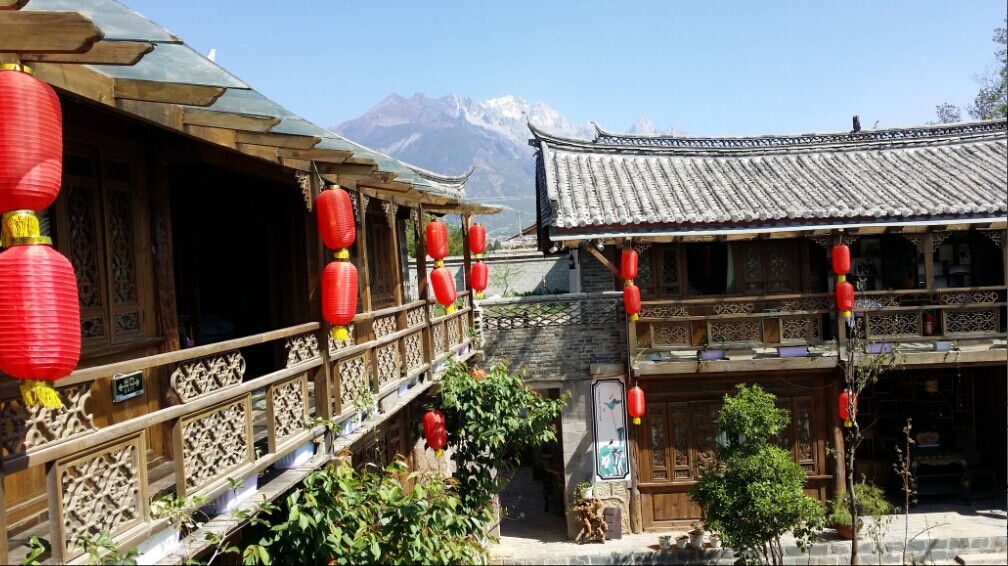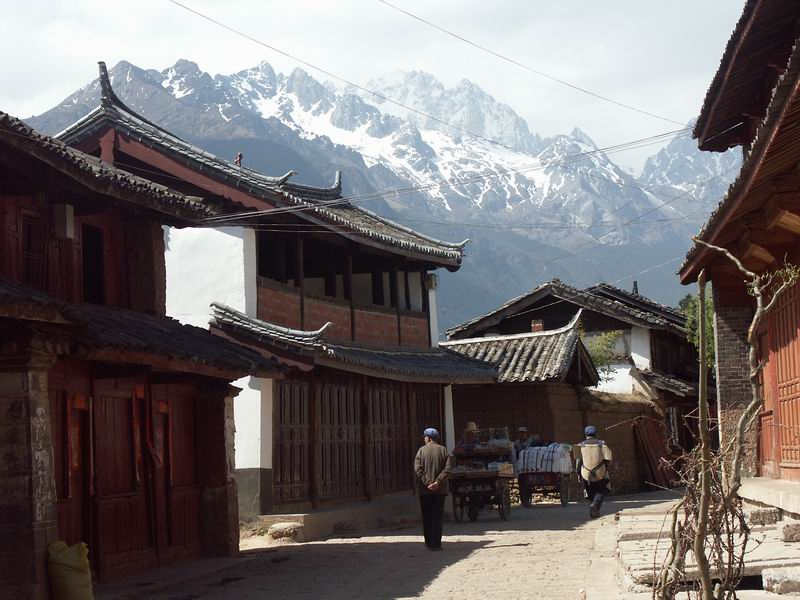

‣ Why Baisha Old Town
Baisha Old Town was part of 'Lijiang Old Town' - World Cultural Heritage. As the oldest and most original Naxi village, Baisha Old Town is not only the cradle-land of Mu Family but also the eariliest settlement of Naxi people. It was once the political, economical, commercial and cultural center of Lijiang where you can appreciate the authentic life of the Naxi People and escape from the overcowded Dayan Old Town and Shuhe Old Town. With tranquility and simplicity, Baisha Old Town Tour may be tourist's better choice who is tiried of the hustle and bustle of large crowds.
‣ Where is Baisha Old Town
On the foot of Jade Dragon Snow Mountain, Baisha Old Town was located in 10 kilometers north of Lijiang Old Town with Dragon Spring to the south and Zhishan Mountain to the west.
‣ Basic Information of Baisha Old Town
 | • Chinese Name: 白沙古镇 • Location: Baisha Village, Yulong Naxi Autonomous Prefecture, Lijiang City, Yunnan Province • Opening Time: All Day Long • Ticket: Free; 30 RMB for Baisha Frescos • Nationality: Naxi nationality • Recommended Visit Time: 1 day • Best Time to Visit: July to September |
‣ History of Baisha Old Town
As mentioned earlier, Baisha Old Town was the cradle of the ancient Mu clan. The Mu family was famous for their exceptional city planning skills and experience. Early in the Tang Dynasty (618-907), the emperor of the Nanzhao state named Yulong Snow Mountain “North-Yue,” meanwhile the ancestors of the Mu clan began to build North-Yue Temple and the town’s streets. These constructions were examples of the golden age of Baisha. Later in the Song Dynasty (960-1279), the town prospered further and became the economic, political, and cultural center of the city of Lijiang. Until early Ming Dynasty, Mu family moved to Dayan Old Town where the Mu's Residence is located today.
‣ What to Visit in Baisha Old Town
Baisha Frescos is the most important highlight in Baisha Old Town. The painting process of these frescos started from early Ming Dynasty and continued to Qing Dynasty with a long history of more than 300 years. Now 55 mural painting are preserved in Dabaoji Palace, Liuli Temple, Dading Pavillion and Dajue Palace, which absorded the bright and colorful style of Tibetan Buddhism and represent the prosperity and artistic level of that period. Moreover, the architectural complex also exemplify the artistic characteristics of Naxi people.
• Dabaoji Palace
The frescos in Dabaoji Palace enjoy the largest scale. Created in Ming Dynasty, the totally 12 mural paintings and 167 images involves Buddhisn, Daoism and Lamaism, which is rare to see.
• Dading Pavillion
About 10 meters from Dabaoji Palace, the history of Dading Pavillion can date back to Ming Dynasty and the 16 well-preserved mural painting are created in Qing Dynasty. Different from those in Dabaoji Palace, these painting have beautiful shapes, bright colors and precise lines, which create strong visual impacts and sensations.
‣ Transportation of Baisha Old Town
Tourists can tak bus No.6 in Red Sun Square in Dayan Old Town and get off in Baisha Stop. Or tourists can cycle 12 kilometers from Dayan Old Town to Baisha Old Town. By cycling, tourists can appreciate the beauty along the way.
‣ Recommended Hotels in Baisha Old Town
• Lijiang Baisha Holiday Resort
• Chinese Name: 丽江白沙别院精品度假酒店
• Address: 33 Sanyuan Village, Baisha Old Town, Yulong, Lijiang
• Phone: +86 139 8704 0240
• Best Time to Visit Baisha Old Town
The best time to visit Baisha Old Town is between April to October when the scenery is charming. March to September, various kinds of flowers is in blossom. The spring time in Lijiang is windy and dry so that tourists had better pay attention to protect from fire and sunburn. Summer time is the rainy season. The temperature is moderate in autumn.
• Ticket for Baisha Frescoes
Tickets to see the Baisha Frescoes are 30 RMB. It is recommended to hire a guide to take you through the grounds in order to gain a more comprehensive understanding of their history and significance. If you join Baisha Old Town tour provided by Yunnan Adventure Travel, we will offer professional English-speaking guide for you.
• Because the frescoes’ pigments are made from minerals, please do not touch the murals nor take pictures of them. Oils from human hands, and the flash of modern cameras, can easily hurt these ancient, delicate historical treasures.
• On the 12th day of the first month of each lunar year, the locals hold a sacrificial ceremony to honor the gods. On this day, people from various ethnic groups in the area come together to pay their respects.
You will only receive emails that you permitted upon submission and your email address will never be shared with any third parties without your express permission.
